- Birch cultivation: How to grow your own birch trees
- 1. Choosing the right site
- 2. Selecting the right birch tree variety
- 3. Planting and care
- 4. Pruning and maintenance
- 5. Enjoying your birch trees
- Birch tree types: Discover the diversity of birch species
- 1. Silver Birch (Betula pendula)
- 2. Paper Birch (Betula papyrifera)
- 3. Downy Birch (Betula pubescens)
- 4. Weeping Birch (Betula pendula ‘Youngii’)
- 5. Himalayan Birch (Betula utilis)
- Birch tree varieties: Explore the various birch tree cultivars
- 1. Paper Birch (Betula papyrifera)
- 2. River Birch (Betula nigra)
- 3. Weeping Birch (Betula pendula)
- 4. Yellow Birch (Betula alleghaniensis)
- 5. Himalayan Birch (Betula utilis)
- Birch tree care: Essential tips for maintaining healthy birch trees
- 1. Planting and location
- 2. Watering
- 3. Pruning
- 4. Fertilizing
- 5. Pest and disease control
- 6. Winter care
- Conclusion
- Birch tree diseases: Common ailments and how to prevent them
- 1. Leaf spot diseases
- 2. Birch dieback
- 3. Bronze birch borer
- 4. Birch canker
- 5. Birch anthracnose
- Birch tree uses: The versatile applications of birch wood
- Furniture
- Interior Finishings
- Plywood and Veneer
- Pulp and Paper
- Firewood
- Crafts and Artwork
- Birch tree symbolism: The cultural significance of birch trees
- Renewal and New Beginnings
- Purity and Cleansing
- Protection and Warding Off Evil
- Resilience and Endurance
- Connection to Nature and Spirituality
- Harvest and Fertility
- Tree of Life
- Conclusion
- Birch Tree Conservation: Protecting Birch Tree Populations and Habitats
- Threats to Birch Tree Populations
- Conservation Strategies
- Collaborative Conservation Efforts
- Questions and Answers:
- What are some common types of birch trees?
- What is the best climate for growing birch trees?
- Can birch trees be grown from seeds?
- Are there any diseases that commonly affect birch trees?
- Are there any specific pruning techniques for birch trees?
- What are the uses of birch wood?
- Videos: Planting Two Interesting Varieties of Birch Tree! // Garden Answer
Birch trees are known for their graceful beauty and their utilization in various industries. They are commonly found in forests across North America, Europe, and parts of Asia. With their distinctive peeling bark and delicate leaves, birch trees add a touch of elegance to any landscape. In this expert guide, we will explore the cultivation, types, and varieties of birch trees.
When it comes to cultivation, birch trees thrive in well-drained soil and prefer areas with full sun or partial shade. They are relatively low-maintenance trees and are generally resistant to pests and diseases. However, it is essential to provide them with adequate water during hot and dry periods to ensure their healthy growth.
There are several types of birch trees, each with its unique characteristics. The silver birch (Betula pendula) is one of the most common species, known for its white bark that sheds in paper-like layers. The river birch (Betula nigra) is another popular variety, well-suited for wetter areas due to its tolerance to flooded conditions. The Himalayan birch (Betula utilis) is a distinctive species that boasts creamy-white bark with dark brown spots.
“Birch trees add a touch of elegance to any landscape.”
In addition to these types, there are various birch tree varieties available, each offering unique features. The weeping birch (Betula pendula ‘Youngii’) is a popular choice for its pendulous branches that create a graceful weeping effect. The paper birch (Betula papyrifera) is valued for its stunning white bark that stands out in winter landscapes. The Japanese white birch (Betula platyphylla var. japonica) is prized for its smooth, silver-white bark and vibrant yellow autumn foliage.
Whether you are a beginner or an experienced gardener, understanding the cultivation, types, and varieties of birch trees is essential for creating a thriving and beautiful landscape. By selecting the right species and caring for them correctly, you can enjoy the unique beauty and many benefits that birch trees offer.
Birch cultivation: How to grow your own birch trees
Growing birch trees can be a rewarding and fulfilling experience. Not only do these trees provide aesthetic value and shade, but they also have several practical uses. Here are some tips on how to successfully grow your own birch trees:
1. Choosing the right site
Birch trees thrive in moist, well-drained soils and prefer full sun. When selecting a site for your birch trees, choose an area with good air circulation to prevent the formation of fungal diseases. Avoid planting birch trees in compacted or poorly drained soil.
2. Selecting the right birch tree variety
There are several varieties of birch trees to choose from, including the silver birch, paper birch, and river birch. Each variety has its own unique characteristics and growth requirements. Consider factors such as mature size, resistance to pests and diseases, and aesthetic appeal when selecting the right birch tree variety for your garden.
3. Planting and care
When planting your birch tree, dig a hole that is wide and shallow to accommodate the tree’s root system. Make sure the top of the root ball is level with or slightly above the soil surface. Backfill the hole with soil, firming it gently around the roots. Water the tree thoroughly after planting and keep the soil moist, but not waterlogged, during the establishment period.
Birch trees benefit from regular watering, especially during dry periods. Apply a layer of mulch around the base of the tree to help retain moisture and suppress weed growth. Avoid using fertilizers high in nitrogen, as birch trees are sensitive to excessive levels of this nutrient.
4. Pruning and maintenance
Prune your birch tree during the dormant season to remove dead, damaged, or diseased branches. This will promote healthy growth and help maintain the tree’s shape. Be careful not to over-prune, as birch trees can be susceptible to sunscald and other injuries.
Regularly monitor your birch tree for signs of pests or diseases, such as birch borers or leaf spot. Promptly address any issues to prevent further damage to the tree. Regularly inspect the tree for signs of stress, such as wilting or yellowing leaves, and take appropriate action, such as adjusting watering or addressing nutrient deficiencies.
5. Enjoying your birch trees
Birch trees provide year-round interest with their distinctive bark color and texture. They also attract wildlife, such as birds and butterflies, and can create a peaceful and relaxing atmosphere in your garden. Take some time to appreciate the beauty and benefits of your birch trees.
By following these tips, you can successfully grow your own birch trees and enjoy their beauty for years to come.
Birch tree types: Discover the diversity of birch species
Birch trees (genus Betula) are known for their slender trunks, beautiful bark, and delicate leaves. These versatile trees are found in various regions around the world and come in different types and varieties. Let’s explore some of the most common birch tree types:
1. Silver Birch (Betula pendula)
The Silver Birch is a popular birch species native to Europe and parts of Asia. It is known for its distinctive bark, which starts off smooth and white, and later develops dark, diamond-shaped markings. The leaves of the Silver Birch are small, triangular, and bright green. This tree is commonly used in landscaping due to its elegant appearance.
2. Paper Birch (Betula papyrifera)
The Paper Birch, also known as the White Birch or Canoe Birch, is a native tree to North America. Its most prominent feature is its white, peeling bark, which gives it a unique appearance. The bark can be used for various purposes, including making baskets and canoes, hence the name “Canoe Birch.” The leaves of the Paper Birch are oval-shaped and deep green in color.
3. Downy Birch (Betula pubescens)
The Downy Birch is another European birch species that is widely distributed throughout the continent. This tree is smaller in size compared to other birch species and has a rounded crown. The bark of the Downy Birch is pale gray or white, and the leaves are smaller and more rounded compared to other birch species. This tree is quite hardy and can tolerate wet and boggy soil conditions.
4. Weeping Birch (Betula pendula ‘Youngii’)
The Weeping Birch is a popular ornamental cultivar of the Silver Birch. It is known for its pendulous branches that sweep downward, giving it a weeping appearance. The bark of the Weeping Birch is similar to the Silver Birch, with white and black markings. This tree is often used as a focal point in gardens due to its graceful and elegant form.
5. Himalayan Birch (Betula utilis)
The Himalayan Birch is native to the Himalayas and other mountainous regions in Asia. It is widely cultivated for its attractive white bark, which peels off in papery layers. The leaves of the Himalayan Birch are oval-shaped and dark green. This tree is well-suited for cooler climates and is often used in landscaping to add a touch of elegance and texture.
These are just a few examples of the diverse birch tree types that exist. Whether you are looking for an ornamental tree for your garden or a hardy tree for landscaping, there is a birch species to suit your needs.
Birch tree varieties: Explore the various birch tree cultivars
With their elegant beauty and distinctive bark, birch trees are a favorite among many gardeners. There are several birch tree varieties to choose from, each with its own unique characteristics. Let’s take a closer look at some of the most popular birch tree cultivars:
1. Paper Birch (Betula papyrifera)
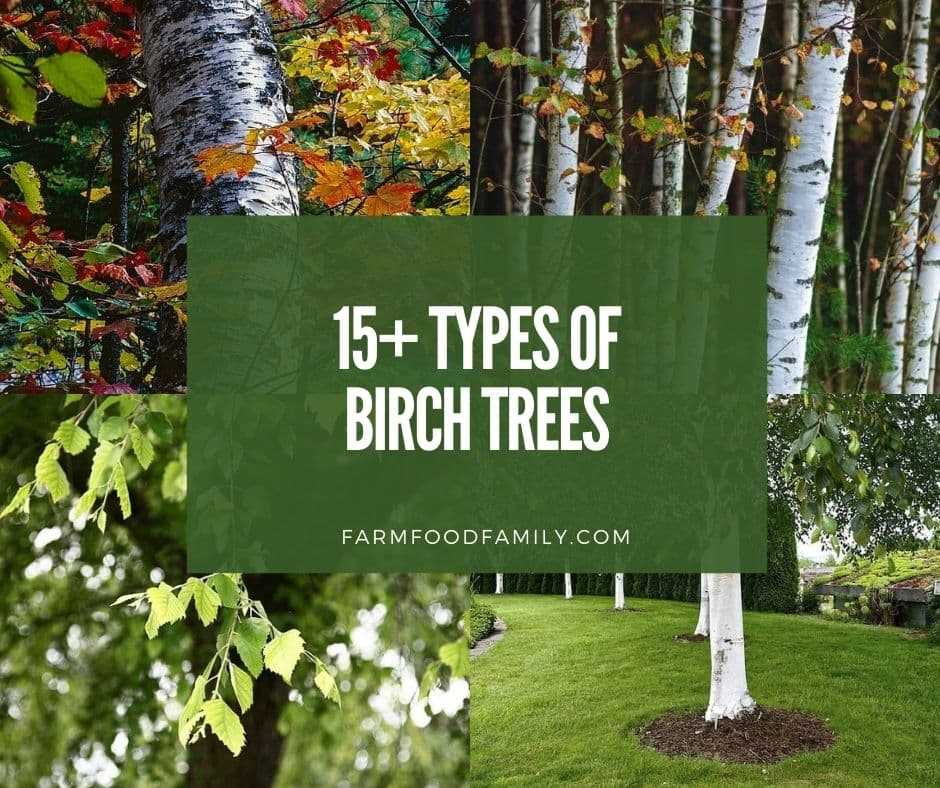
Paper Birch, also known as White Birch or Canoe Birch, is a native North American species. It is characterized by its stunning white bark that peels off in thin papery layers. This variety is known for its impressive height, graceful branching, and yellow fall foliage.
2. River Birch (Betula nigra)
River Birch is a deciduous tree native to the eastern United States. It is highly valued for its unique peeling bark, which starts as reddish-brown and matures to shades of cream, cinnamon, and salmon. This variety is known for its adaptability to wet soils and its resistance to birch borer insect.
3. Weeping Birch (Betula pendula)
Weeping Birch, also called European White Birch, is known for its graceful, pendulous branches that create a weeping effect. It has attractive silver-white bark and delicate, lacy leaves. This variety adds a touch of elegance and drama to any landscape.
4. Yellow Birch (Betula alleghaniensis)
Yellow Birch is a slow-growing tree native to eastern North America. It is characterized by its golden bark that peels off like a birch paper. This variety is highly valued for its strong, durable wood and its beautiful fall foliage, which turns shades of yellow, orange, and red.
5. Himalayan Birch (Betula utilis)
Himalayan Birch, also known as Jacquemontii Birch, is a tree native to the Himalayas and surrounding regions. It is prized for its bright white bark that provides a striking contrast to the surrounding greenery. This variety is well-suited to cooler climates and makes a stunning addition to any garden.
These are just a few examples of the many birch tree varieties available. Each variety has its own unique characteristics, making birch trees a versatile and beautiful addition to any landscape.
Birch tree care: Essential tips for maintaining healthy birch trees
1. Planting and location
Choose a suitable location for planting your birch tree. They prefer moist, well-drained soil with a slightly acidic pH level. Avoid planting birch trees in areas with heavy clay soil or standing water.
Ensure that the planting hole is large enough to accommodate the root system of the tree. Gently spread out the roots and backfill the hole with soil, ensuring the tree is planted at the same depth as it was in the nursery.
Provide your birch tree with a location that receives partial shade to protect it from intense sunlight and strong winds. Birches thrive in cool climates and may struggle in hot and dry conditions.
2. Watering
Birch trees have high water requirements, especially when they are young. Water newly planted birch trees deeply and regularly, ensuring the soil around the tree remains consistently moist but not waterlogged.
During hot and dry periods, increase the frequency of watering to prevent the tree from becoming stressed. Mulching around the base of the tree can help retain moisture in the soil and regulate temperature.
3. Pruning
Regular pruning is essential for maintaining the health and appearance of birch trees. Prune your birch tree during late winter or early spring before new growth begins.
Remove any dead, damaged or diseased branches with clean pruning shears. Thin out congested branches to improve air circulation and reduce the risk of fungal infections.
Be cautious when pruning birch trees, as they are prone to bleeding sap. Avoid heavy pruning during the summer months to minimize sap loss.
4. Fertilizing
Birch trees have moderate fertilizer requirements. Apply a slow-release, balanced fertilizer in early spring to provide essential nutrients for healthy growth.
Avoid using high-nitrogen fertilizers, as they can promote excessive foliage growth at the expense of root development. Follow the manufacturer’s instructions for the appropriate application rate.
5. Pest and disease control
Monitor your birch trees regularly for signs of pests and diseases. Common pests include aphids, leafminers, and bronze birch borers. If infestations occur, treat them promptly with organic or chemical controls.
Watch out for diseases such as leaf spot, cankers, and root rot. Maintain good tree hygiene by removing fallen leaves and debris, as they can harbor fungal spores.
If you notice any signs of disease or pest infestation, consult a professional arborist for appropriate treatment options.
6. Winter care
Birch trees are susceptible to winter damage, especially in regions with harsh winters. Protect the trunk of young trees by wrapping them with burlap or commercial tree wraps.
Avoid using plastic materials, as they can trap moisture and promote rot. Apply a layer of organic mulch around the base of the tree to insulate the roots and protect them from extreme temperatures.
Regularly inspect your birch trees during the winter months and remove any snow or ice buildup to prevent branches from snapping under the weight.
Conclusion
By following these essential tips for birch tree care, you can ensure the health and longevity of your birch trees. Remember to provide them with the right planting location, adequate water, regular pruning, and protection against pests, diseases, and winter damage. With proper care, your birch trees will thrive and add beauty to your landscape for years to come.
Birch tree diseases: Common ailments and how to prevent them
1. Leaf spot diseases
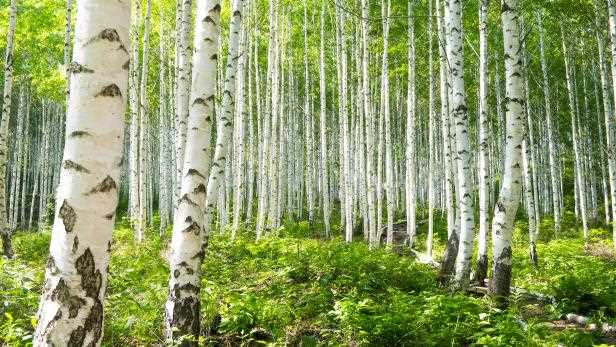
Leaf spot diseases are a common problem that affects birch trees. These diseases are caused by various fungal pathogens and can lead to the development of small, dark spots on the leaves. Over time, the spots can enlarge and merge together, causing the affected leaves to turn yellow and eventually fall off.
To prevent leaf spot diseases, it is important to keep the birch tree healthy and properly cared for. This includes providing adequate irrigation, avoiding overhead watering, and ensuring proper spacing between trees to encourage good air circulation. Additionally, removing and disposing of fallen leaves can help reduce the spread of fungal spores.
2. Birch dieback
Birch dieback is a condition characterized by the gradual decline and death of branches on a birch tree. It is commonly caused by various factors including insect infestations, fungal infections, and environmental stressors. Symptoms of birch dieback include wilting leaves, branch dieback, and ultimately the death of the affected branches.
To prevent birch dieback, it is important to maintain tree health by providing proper irrigation, regular pruning, and fertilizer application. Additionally, monitoring the tree for signs of insect infestation and promptly treating any infections can help prevent the condition from occurring or worsening.
3. Bronze birch borer
The bronze birch borer is a destructive insect pest that primarily affects birch trees. The larvae of the beetle tunnel into the trunk and branches of the tree, causing damage to the vascular tissues. Infested trees often show signs of wilting leaves, branch dieback, and the presence of D-shaped exit holes on the trunk.
To prevent bronze birch borer infestations, it is important to maintain tree vigor through regular watering, proper pruning, and fertilization. Additionally, avoiding any unnecessary stressors such as mechanical injuries or excessive pruning can help prevent the beetles from infesting the trees.
4. Birch canker
Birch canker is a fungal disease that affects the bark of birch trees. It causes the formation of sunken areas on the trunk or branches, which can eventually girdle the tree and lead to its death. Other symptoms include discolored bark, oozing sap, and the presence of fungal fruiting bodies.
To prevent birch canker, it is important to maintain proper tree health by providing adequate irrigation, avoiding mechanical injuries to the trunk, and ensuring good air circulation around the tree. Additionally, promptly removing and disposing of infected branches can help prevent the spread of the disease.
5. Birch anthracnose
Birch anthracnose is a fungal disease that primarily affects the leaves of birch trees. It causes the development of dark, irregularly shaped lesions on the leaves, which can lead to defoliation and reduced tree vigor. In severe cases, the disease can cause dieback of branches and even death of the affected tree.
To prevent birch anthracnose, it is important to maintain good tree health through proper irrigation, avoiding overhead watering, and ensuring adequate spacing between trees. Additionally, removing and disposing of fallen leaves can help reduce the spread of fungal spores.
| Disease | Symptoms | Prevention |
|---|---|---|
| Leaf spot diseases | Small, dark spots on leaves; yellowing and leaf drop | Proper tree care, remove fallen leaves |
| Birch dieback | Wilting leaves, branch dieback, branch death | Proper irrigation, pruning, insect control |
| Bronze birch borer | Wilting leaves, branch dieback, D-shaped exit holes | Tree vigor maintenance, avoidance of stressors |
| Birch canker | Sunken areas on trunk/branches, discolored bark | Proper tree health, prompt branch removal |
| Birch anthracnose | Dark lesions on leaves, defoliation | Proper tree health, leaf removal |
Birch tree uses: The versatile applications of birch wood
Birch trees are not only admired for their beauty and shade they provide, but also for the versatile applications of their wood. Birch wood is highly valued in various industries for its strength, durability, and natural beauty, making it a popular choice for a wide range of products.
Furniture
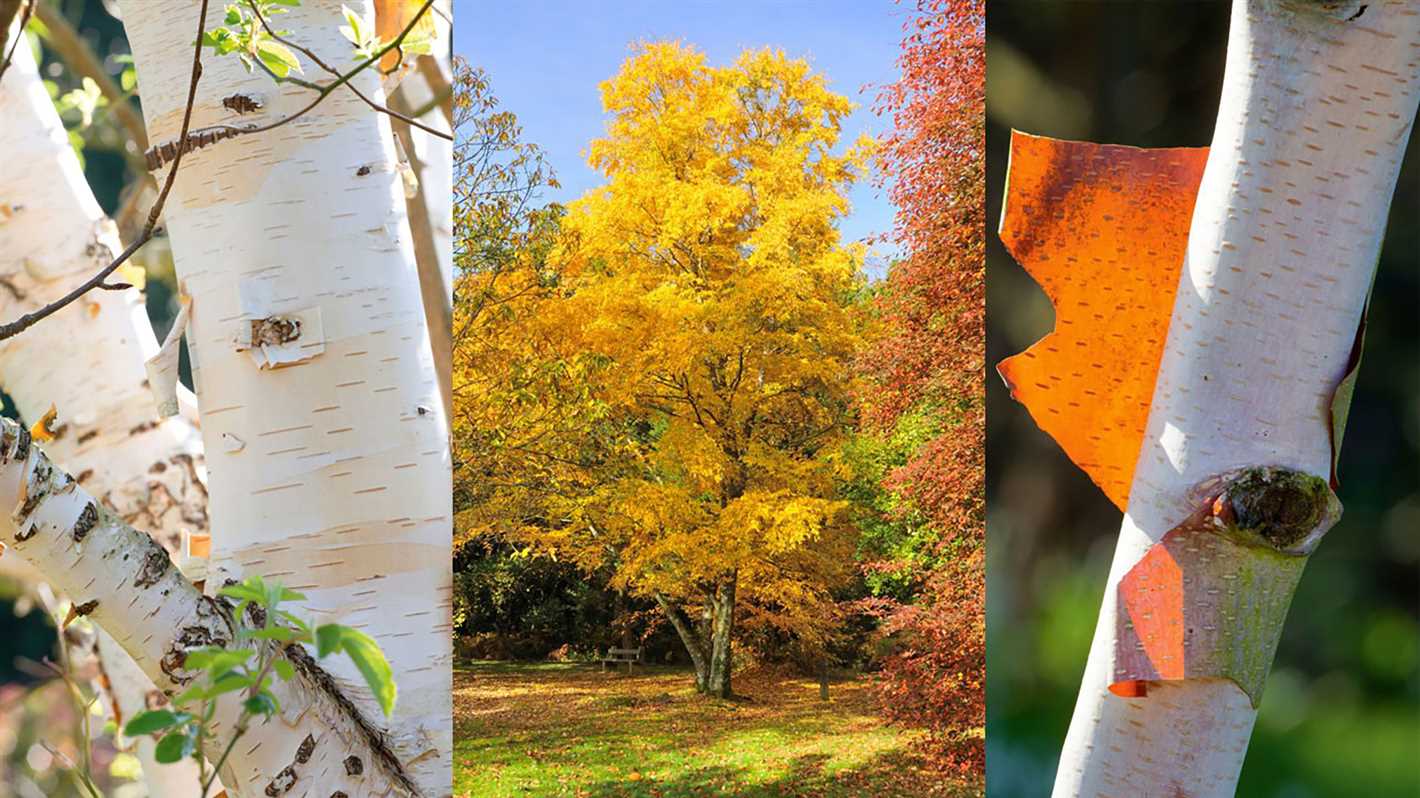
Birch wood is commonly used in the production of furniture. Its light color and fine grain make it an attractive choice for crafting elegant and timeless pieces. Birch furniture is known for its durability and resistance to warping, making it ideal for high-quality, long-lasting furniture. It is commonly used for crafting chairs, tables, cabinets, and bed frames.
Interior Finishings
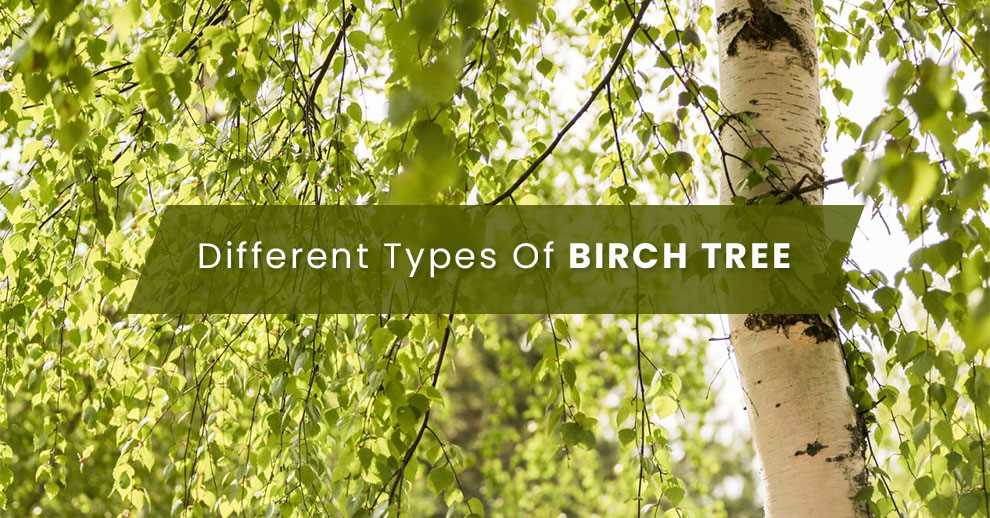
Birch wood is often used in interior finishings, such as flooring, paneling, and moldings. Its smooth surface and warm color give any space a natural and inviting feel. Birch flooring is highly appreciated for its durability and ease of maintenance. It is also a popular choice for wall paneling and trim due to its ability to add a touch of warmth and elegance to any room.
Plywood and Veneer
Birch wood is widely used in the production of plywood and veneer. Its uniform texture and attractive appearance make it a popular choice for these applications. Birch plywood is strong, lightweight, and easy to work with, making it suitable for a wide range of projects such as cabinetry, furniture, and construction. Birch veneer is often used for decorative purposes, adding a touch of natural beauty to doors, furniture surfaces, and other items.
Pulp and Paper
Birch wood is also utilized in the pulp and paper industry. The long, strong fibers of birch make it a valuable source of pulp for manufacturing various paper products. Birch paper is known for its smooth texture and high-quality finish. It is used in products such as books, magazines, and fine stationery.
Firewood
Birch wood is widely sought after as firewood. It burns quickly and produces a high amount of heat, making it an excellent choice for heating and cooking. Birch firewood is known to ignite easily and provide a bright flame, making it a favorite among campers and those who enjoy cozy fires at home.
Crafts and Artwork
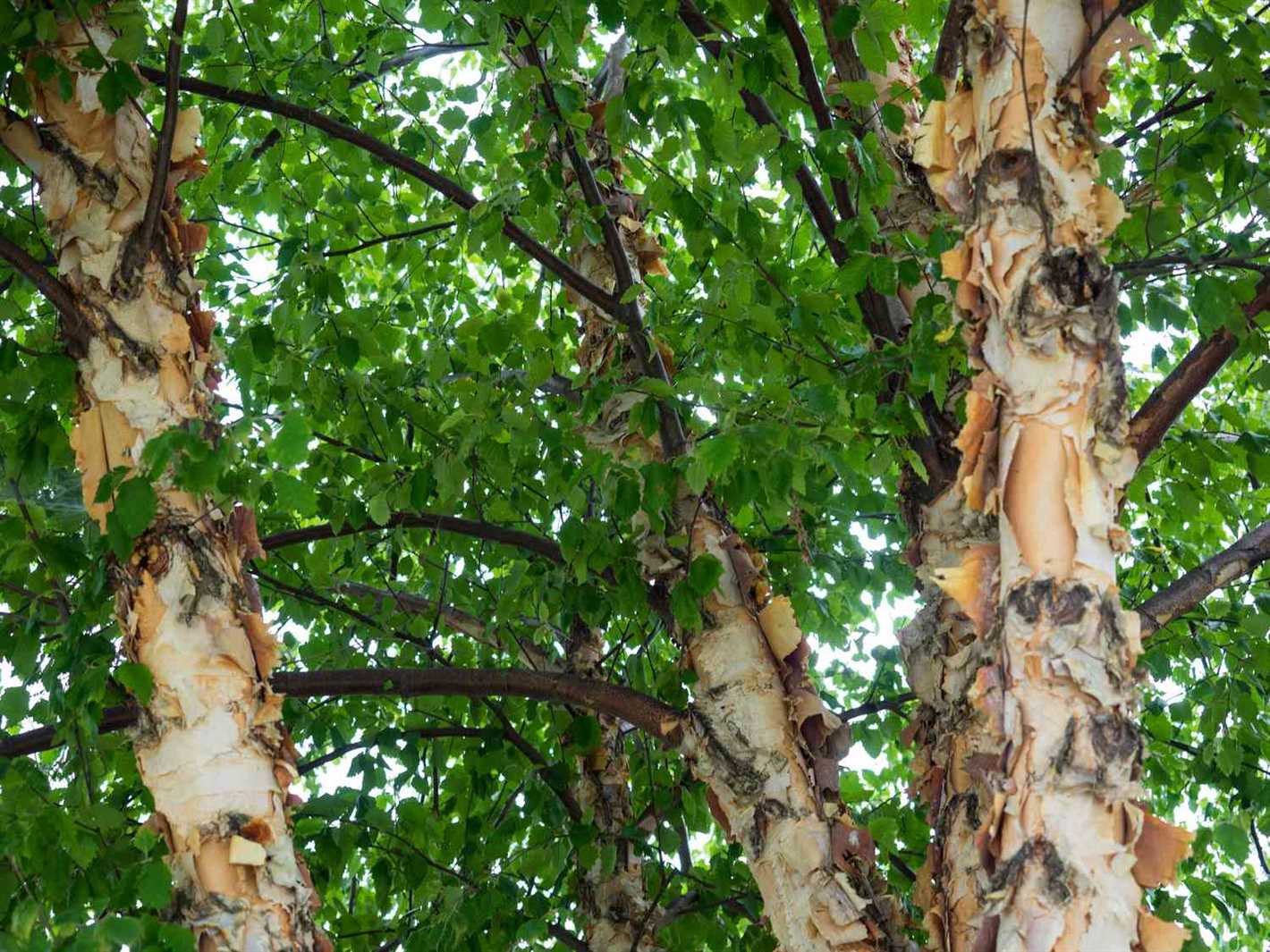
Birch wood is a popular choice among artists and craftsmen due to its natural beauty and workability. It is often used for carving, turning, and woodworking projects. Birch bark, with its unique texture and durability, is also used for creating various crafts, including baskets, boxes, and ornaments. Its light color and smooth surface provide an excellent canvas for painting and other artistic techniques.
Overall, birch wood’s versatility and natural beauty make it a valuable resource in many industries. From furniture to artwork, birch wood is appreciated for its strength, durability, and timeless appeal.
Birch tree symbolism: The cultural significance of birch trees
The birch tree holds great cultural significance in many parts of the world. Throughout history, it has been associated with various symbolic meanings and beliefs. Here are some of the main symbols and cultural representations of birch trees:
Renewal and New Beginnings
The birch tree is often seen as a symbol of renewal and new beginnings. Its ability to regenerate and thrive even after severe damage or harsh conditions is seen as a testament to its resilience and the potential for personal growth and transformation.
Purity and Cleansing
In many cultures, the birch tree is associated with purity and cleansing. Its white bark, often compared to the color of snow, is seen as a symbol of purity and innocence. Birch trees are also believed to have the ability to purify the air and cleanse the environment.
Protection and Warding Off Evil
Birch trees have long been used for their protective properties in various folk traditions. In some cultures, birch twigs or brooms made from birch branches are used to ward off evil spirits or negative energies from a space. The branches may also be hung near doorways to protect a home from unwanted influences.
Resilience and Endurance
As mentioned earlier, the birch tree is known for its resilience and ability to endure harsh conditions. This quality has led to its association with strength, perseverance, and determination. The birch tree is often seen as a symbol of overcoming adversity and standing tall even in the face of challenges.
Connection to Nature and Spirituality
Birch trees are regarded as sacred in various indigenous cultures. They are seen as a bridge between the earthly and spiritual realms and are associated with wisdom, intuition, and healing. In some traditions, it is believed that birch trees possess a spiritual essence that can be tapped into for guidance and connection with nature.
Harvest and Fertility
During harvest festivals and celebrations, birch branches and leaves are often used as decorations to symbolize abundance and fertility. The leaves and twigs may be used in wreaths or as a part of floral arrangements to celebrate the bountiful harvest and promote fertility for the coming year.
Tree of Life
In some mythologies, the birch tree is considered a representation of the Tree of Life. It is believed to connect the different realms of existence, from the heavens to the underworld. In these mythologies, the birch tree is seen as a central pillar of existence and a symbol of the interconnectedness of all living beings.
Conclusion
The birch tree holds a rich cultural significance and has been ascribed various symbolic meanings throughout history. From its association with renewal and new beginnings to its representation of purity and protection, birch trees have captivated the human imagination and continue to play a vital role in various cultural traditions around the world.
Birch Tree Conservation: Protecting Birch Tree Populations and Habitats
Birch trees (genus Betula) are renowned for their beauty and ecological significance. These trees provide various benefits to ecosystems, including habitat for wildlife, erosion control, and carbon sequestration. However, birch tree populations and habitats are at risk due to various factors, such as deforestation, climate change, and invasive species. Conservation efforts are crucial to ensure the survival and prosperity of birch trees.
Threats to Birch Tree Populations
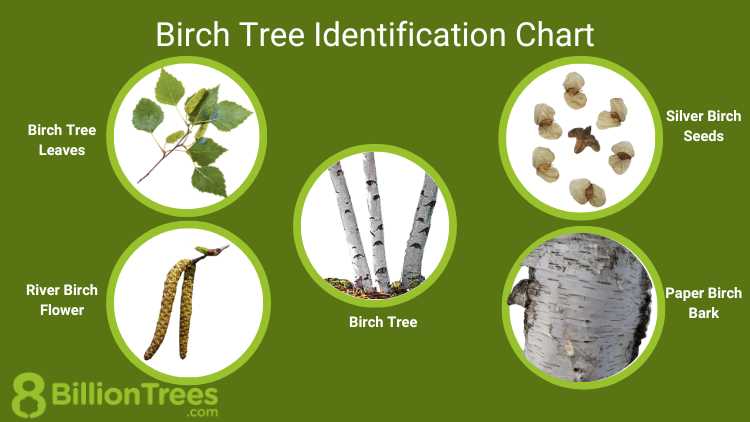
There are several threats to birch tree populations that require conservation intervention:
- Habitat Loss: Deforestation, urbanization, and land conversion significantly reduce the available habitats for birch trees.
- Invasive Species: The introduction of non-native invasive species can outcompete and displace birch trees, reducing their population.
- Climate Change: Rising temperatures, changing precipitation patterns, and extreme weather events can negatively impact birch tree growth and survival.
- Disease and Pests: Birch trees can be susceptible to various diseases and pests, such as the bronze birch borer and birch leafminer.
Conservation Strategies
To protect birch tree populations and habitats, several conservation strategies can be implemented:
- Protected Areas: Establishing and maintaining protected areas, such as national parks and nature reserves, can safeguard birch tree populations and their associated habitats.
- Habitat Restoration: Conducting habitat restoration projects, such as reforestation and habitat enhancement, can increase suitable habitats for birch trees.
- Invasive Species Management: Implementing invasive species management programs can control and prevent the spread of non-native species that harm birch tree populations.
- Climate Change Adaptation: Developing and implementing strategies to mitigate the impacts of climate change on birch trees, such as planting heat-tolerant varieties and promoting sustainable land management practices.
- Education and Outreach: Raising awareness about the ecological importance of birch trees and engaging communities in conservation efforts can foster a sense of responsibility and encourage stewardship.
Collaborative Conservation Efforts
Conservation of birch tree populations and habitats requires collaborative efforts between government agencies, conservation organizations, researchers, and local communities. Cooperation in research, policy development, and implementation of conservation strategies can ensure the long-term viability and vitality of birch trees in their natural habitats.
| Organization | Website |
|---|---|
| The Birch Tree Foundation | www.birchtreefoundation.org |
| International Birch Conservation Society | www.ibcs.org |
| United Birch Tree Alliance | www.unitedbirchtreealliance.org |
Questions and Answers:
What are some common types of birch trees?
Some common types of birch trees include the silver birch (Betula pendula), the paper birch (Betula papyrifera), and the river birch (Betula nigra).
What is the best climate for growing birch trees?
Birch trees prefer cool temperate climates with moist soil and mild summers. They can tolerate a range of climates, but thrive best in areas with cold winters.
Can birch trees be grown from seeds?
Yes, birch trees can be grown from seeds. However, it is important to note that birch seeds have a short viability period and should be sown as soon as possible after harvesting.
Are there any diseases that commonly affect birch trees?
Yes, birch trees can be susceptible to various diseases, including birch leaf miner, birch dieback, and birch canker. Regular maintenance and proper care can help prevent and manage these diseases.
Are there any specific pruning techniques for birch trees?
Yes, there are specific pruning techniques for birch trees. It is recommended to prune birch trees in late winter or early spring before they start to leaf out. Dead or damaged branches should be removed, and the crown should be thinned to allow for better airflow and light penetration.
What are the uses of birch wood?
Birch wood is commonly used in furniture making, interior finishes, and flooring. It is also used to make plywood, veneer, and various wood crafts. Additionally, birch bark is used for making baskets, canoes, and other traditionally crafted items.







